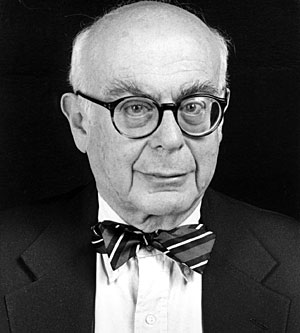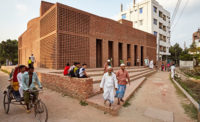Until his death on November 23 at the age of 81, Robert Gutman, Hon. AIA, did more than any other individual to build a discourse between the disciplines of architecture and sociology, particularly with regard to housing, architectural education, and architectural practice. He avoided advocating the direct application of social fact to architectural form; rather, he initiated a conversation about the occupants of buildings and the forms, policies, plans, and theories that architects might shape. For the architects who met him, Gutman’s erudition was balanced by a contagious curiosity, which went a long way to assuage the pointed criticism he could deliver—generally with an impish smile and a wealth of data to back him up.

Robert Gutman
Most architects became aware of Robert Gutman in 1977 by reading his response in Progressive Architecture to Eisenman’s House VI, written after he and Eisenman had become colleagues at Princeton University’s School of Architecture. Gutman opened with his own aesthetic impression of the residence in Cornwall, Connecticut: “House VI is literally breathtaking—one of the superb visual experiences of modern design.” Citing the work’s relation to significant buildings such as the Schroeder House, a Dutch work by Gerrit Rietveld, he kept architectural readers in tow while leading them onto the battleground he was aiming for all along—the arena where form and use, aesthetics and technology, concept, and program face each other head on. Here, House VI didn’t fare well at all. But Gutman’s deep respect for architecture always shined through, and it was this attitude that attracted many talented students, practitioners, and educators to work with him over the years. In addition to the younger scholars he mentored, he maintained close ties with architects from across the ideological spectrum: Robert Venturi and Denise Scott-Brown, Michael Sorkin, Michael Graves, Robert Hillier, Elizabeth Plater-Zyberk, and Deborah Berke, to name a few.
Gutman earned his bachelor’s degree from Columbia University, completing a PhD in Sociology there in 1955. He studied demography at the London School of Economics and in 1965 became a special student of architecture at The Bartlett School of Architecture, in London, and at Princeton. From the late 1960s until the end of his life, he divided his teaching between sociology at Rutgers University and architecture at Princeton. He held a number of visiting professorships at schools including Stanford University, the University of Michigan, The Bartlett, and the University of Stockholm; he was also a visiting member at the Institute for Advanced Study, in Princeton, New Jersey. He authored several books, including an important early work in 1972 titled People and Buildings, and more than a hundred journal articles.
Gutman was unique in an American architectural scene that was abuzz with social scientists in the 1960s and 70s from anthropologist Amos Rapoport, to psychologist Robert Sommer, and sociologists Herbert Gans and Nathan Glazer. But no one had such a viral impact upon the way architects thought as Gutman did. If part of that influence stemmed from teaching at Princeton, the other part came from his substantial research into every facet of architectural practice.
His 1988 book Architectural Practice: A Critical View, packed with data, turned a mirror to the profession where could see itself plainly for the first time. Gutman’s position as the sociological father of architecture was solidified. He spoke at scholarly symposia and professional meetings, consulted with some of the New York area’s leading firms, and ran workshops for the American Institute of Architects. Bow tie askew, polishing his bald head, Gutman maintained his ambitious schedule to the end. His essay collection Architecture: From the Outside In is forthcoming from the Princeton Architectural Press.
Gutman will be remembered for elevating the discourse about architecture’s people: those who occupy buildings, society at large, and architects themselves. He is survived by his two children, John and Liz, and three grandchildren; his wife of 47 years, Sonya Rudikoff, died in 1997. A memorial will be held at 3 p.m. on January 19, 2008 in the Princeton University Chapel.


Post a comment to this article
Report Abusive Comment